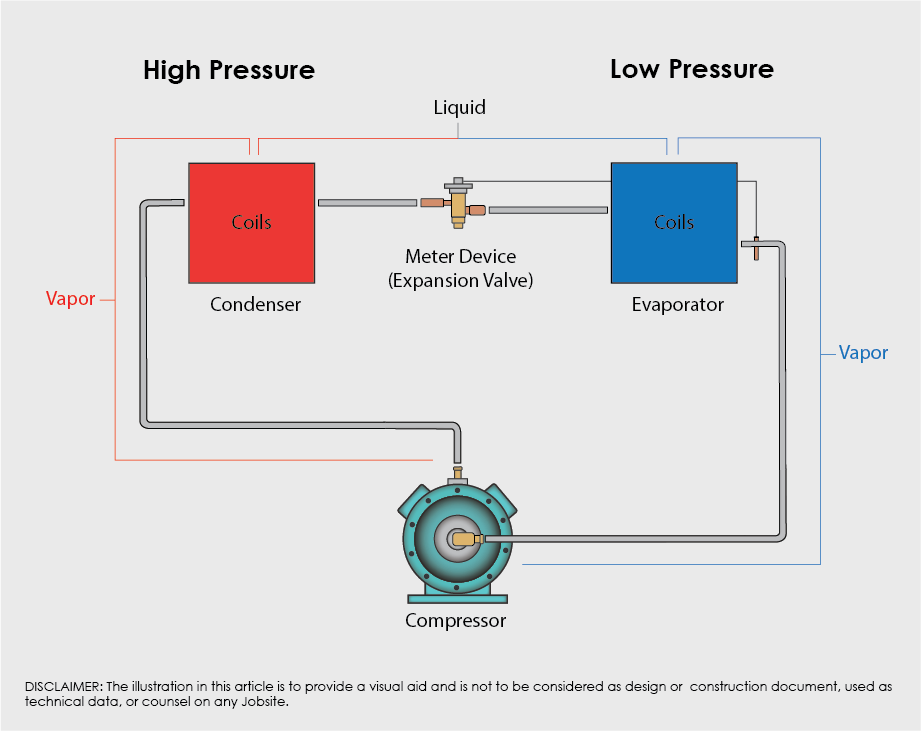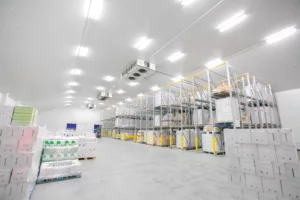The Four Main Refrigeration Components
- Compressor
- Condenser
- Expansion Valve
- Evaporator
The Refrigeration Cycle
The refrigeration cycle starts with the compression of refrigerant gas through the compressor. At this cycle stage, the refrigerant gas temperature is increased and consequently turned into a high-pressure, high-temperature vapor.
Then, the high-pressure, high-temperature vapor flows through the condenser. At this point, the refrigerant absorbs heat and releases it through a cooling tower while the condenser cools and condenses the vapor to a high-pressure, high-temperature liquid.
Then the expansion valve reduces the pressure of the liquid, causing it to expand rapidly. The refrigerant absorbs heat during this expansion and evaporates into a low-pressure, low-temperature vapor as it passes through the evaporator traveling back to the compressor, where the cycle begins again.
A refrigeration system is a complex mechanism that employs a repeated sequence of compression, condensation, expansion, and vaporization to move heat from one site to another by means of mechanical force.
The process of refrigeration functions by allowing the refrigerant to take in heat from a low-temperature space and then release it into a high-temperature space. Through this method, the refrigeration mechanism has the ability to lower the temperature of a chilly environment, like an air conditioning unit or a cold storage space, while raising the temperature of the warmer surroundings, which is usually the external environment.





